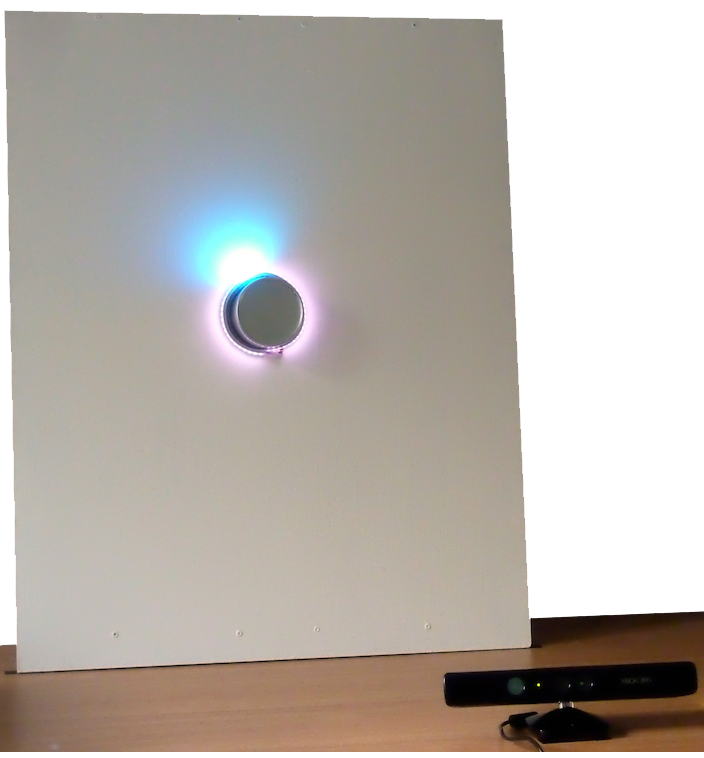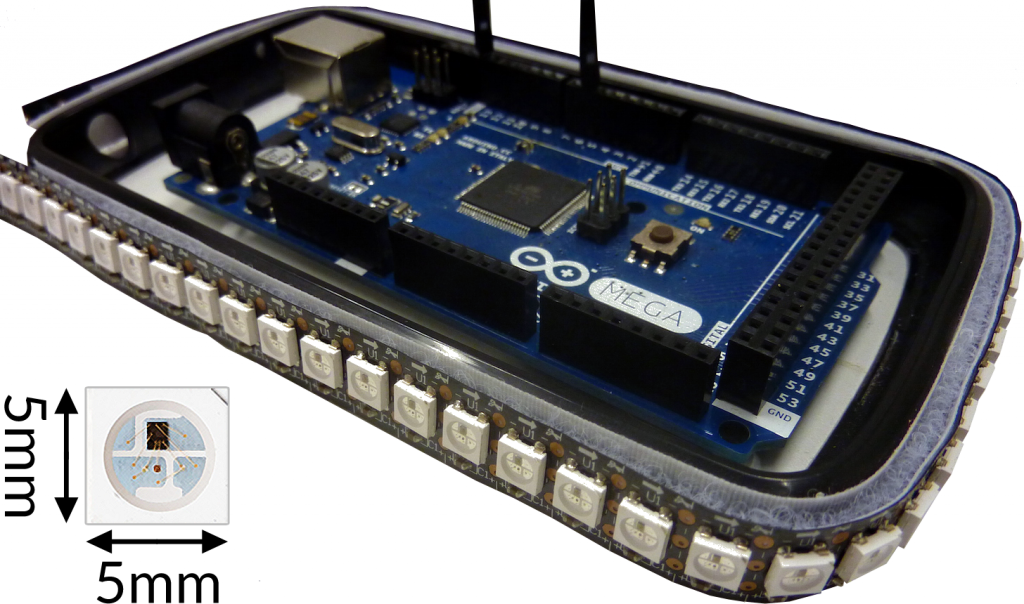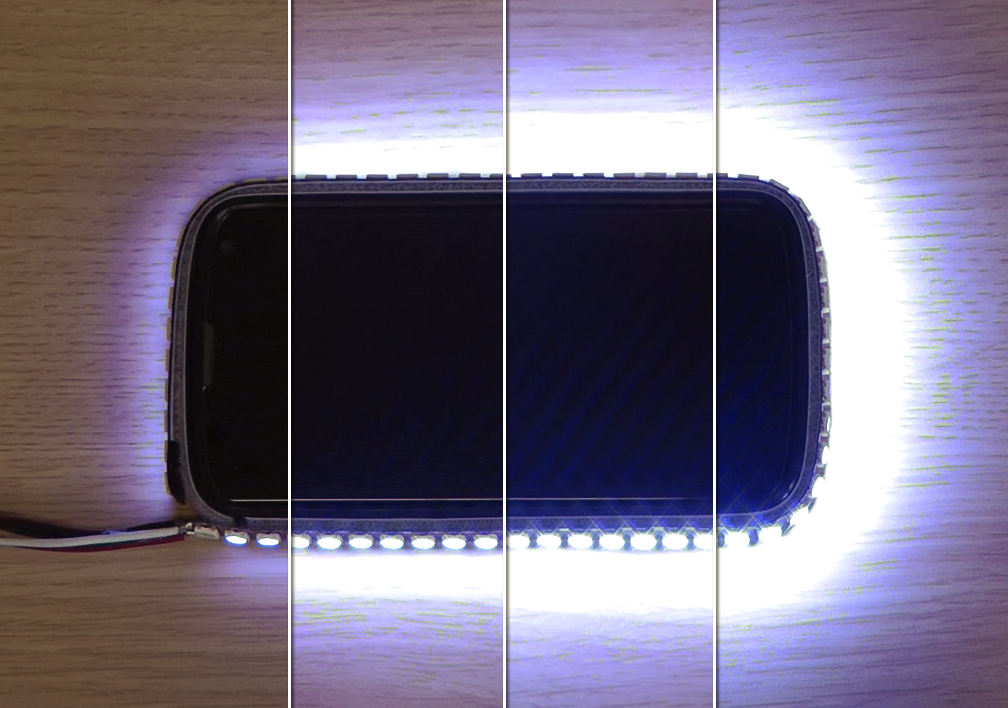Interactive Light Feedback
We have been investigating interactive light displays, a way of presenting visual feedback in the space surrounding small devices. This keeps their limited-sized screens free for showing content. Interactive light displays use small light sources, like the ones shown below, to illuminate surrounding surfaces with light. When used as feedback, we call this interactive light feedback.
In our first prototype interactive light display, we used a flexible strip of LEDs (Adafruit NeoPixels) wrapped around a mobile phone. This display has 60 LEDs which can be controlled independently of each other. This means that each can have a unique hue and brightness, opening up a large design space for interactive light feedback.
Recent projects have investigated how interactive light feedback can be used in in-air gesture interfaces. Users require lots of feedback to be able to gesture confidently and effectively, but small devices (like mobile phones) are limited in their ability to present feedback. Interactive light feedback allows such devices to present information visually, without affecting the content on screen. This feedback can also be noticed more easily from a greater distance away, meaning users can gesture without first approaching their phone. We have found this to be an effective way of giving gesture feedback.

The Gesture Thermostat is a household thermostat with an interactive light display. Users can interact with it from across the room, using in-air gestures.
We have also investigated the use of interactive light displays for household controls, allowing simple devices with no display to give feedback without adding screens or changing their form factor. By giving these controls an expressive way of giving feedback, they can use other input modalities which require feedback to remain usable. For example, speech and in-air gesture input could be used, with users getting interactive light feedback about their actions.

